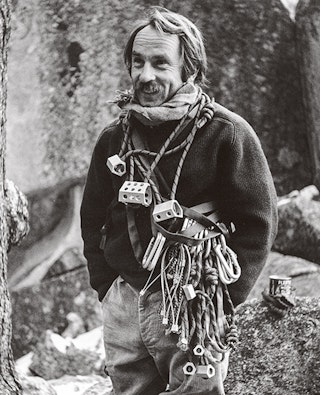
결제수단:

“The more you know, the less you need,” said Patagonia founder Yvon Chouinard. As design heroes go, few others speak to Bellroy’s guiding principles quite as coherently as Patagonia. Chouinard captured our attention through the pages of his alternative management manifesto, 'Let My People Go Surfing'. As environmental pioneers, Patagonia push us to seek alternatives, to give back, to advocate for meaningful change, and to advance manufacturing methods.
As a design house, they’ve shown us that making the best products involves deep consideration of a context far greater than just the product itself. They inspire us with their emphasis on thriving business as a key ingredient to social and environmental contributions. And, perhaps most importantly, they speak a language of solutions – from helping people navigate the day-to-day to responding to our greatest environmental challenges.


By following Patagonia’s lead, we’ve learned the earth need not wear the cost of our quest for superior gear.
The Patagonia journey began with an elemental design shift. In the 1960s, when Chouinard learned he could craft reusable rock-climbing anchor points from recycled steel, he took to backyard blacksmithery. His homemade ‘pitons’ were soon in hot demand, and in 1965 he joined forces with aeronautical engineer Tom Frost. Under the banner of Chouinard Equipment, the two went on to redesign almost every climbing tool – making them stronger, lighter, simpler, more functional, and accessible to the masses.
The ‘Patagonia’ moniker came soon afterwards, encompassing the burgeoning wilderness clothing arm of the business. Waterproof polypropylene underwear, heavy-duty rugby shirts for climbing, light-weight polyurethane parkas, boiled-wool gloves and bivouac sacks – from the outset, inherent in the Patagonia code was the concept of function always heavily influencing form. And this constant response to environmental input continues to drive design and innovation today.
As suggested in the blurb for Let My People Go Surfing, Chouinard’s story is that of “an iconoclastic entrepreneur who brought doing good to the heart of his business; challenging conventional wisdom, leading a simpler and more examined life, and making a living without losing your soul”. The examples Patagonia have set in terms of business responsibility and lasting, intelligent, utilitarian design have inspired a movement of likeminded operators – Bellroy included – to reach for greater things.
Here are three of Patagonia’s guiding principles that resound strongly:
A critical realization came early in the Patagonia story. In the late 1960s, as rock-climbing’s popularity was growing, the environmental impacts of steel and hammers on natural rock faces became pronounced. Chouinard and Frost’s response was to look beyond the tools themselves and incorporate some broader context into a safe and eco-friendly solution.

Their revolutionary hand-inserted, aluminium anchor points first appeared in Chouinard Equipment’s catalogue in 1972. The booklet opened with an essay spruiking the environmental benefits of ‘clean’ climbing. “Clean is climbing the rock without changing it; a step closer to organic climbing for the natural man,” they declared. For 1972, the concepts of clean, natural and organic signified radical thinking. Little did they know at the time, this synergy between function, form, innovation and ecological responsibility would underpin the Patagonia business and design practices for the decades ahead.
For a long time, Patagonia have been considered at the forefront of environmentally conscious manufacturing. By donating one percent of sales (not just profits) to grassroots environmental organizations, they’re active in the fight to save wilderness areas. Since 1996, they’ve shifted away from pesticide-intensive cotton crops, using 100% organics. Recycled polyester, hemp and renewables, sulphide-free dyes – though pollution is an inevitable by-product of manufacturing, through research and innovation they work steadily to reduce harm.

But in many ways, product longevity trumps all of the eco-initiatives. The longer you can keep every item out of landfill, the less of a footprint your products are leaving behind. At Bellroy, we take quality and long-sightedness very seriously. This is why every design is considered... deeply. We give a great deal of consideration to the habits, technology and currency of a region; the environmental footprint of the materials and construction; the functionality over years to come; and how we can put a little quiet delight into the interactions our customers have with the things they carry through life. So our customers can hold onto their Bellroy for a very long time to come.
At Bellroy, we credit Patagonia with guiding us towards sustainable product life cycles worth replicating – or the ‘cradle-to-cradle’ approach. In cradle-to-cradle design, materials used in production are designated as either biological nutrients (materials that can be returned to the earth without harm) or technical nutrients (synthetic materials that can be recycled or reused well). It’s about constantly seeking out the ‘right’ materials, not just what’s available or popular. By choosing fabrics and components based on these measures, we’re working hard to create products that will live a long life, adapt to their environments and stay true to their purposes.
In many ways, product longevity trumps all of the eco-initiatives. The longer you can keep every item out of landfill, the less of a footprint your products are leaving behind.

By following Patagonia’s lead, we’ve learned the earth need not wear the cost of our quest for superior gear. On the contrary, as thoughtful manufacturers working with high-quality, durable materials and enduring designs we can play a meaningful role in the reduction of harm to our environment.
Words by Samson McDougall. Photos courtesy of Patagonia.